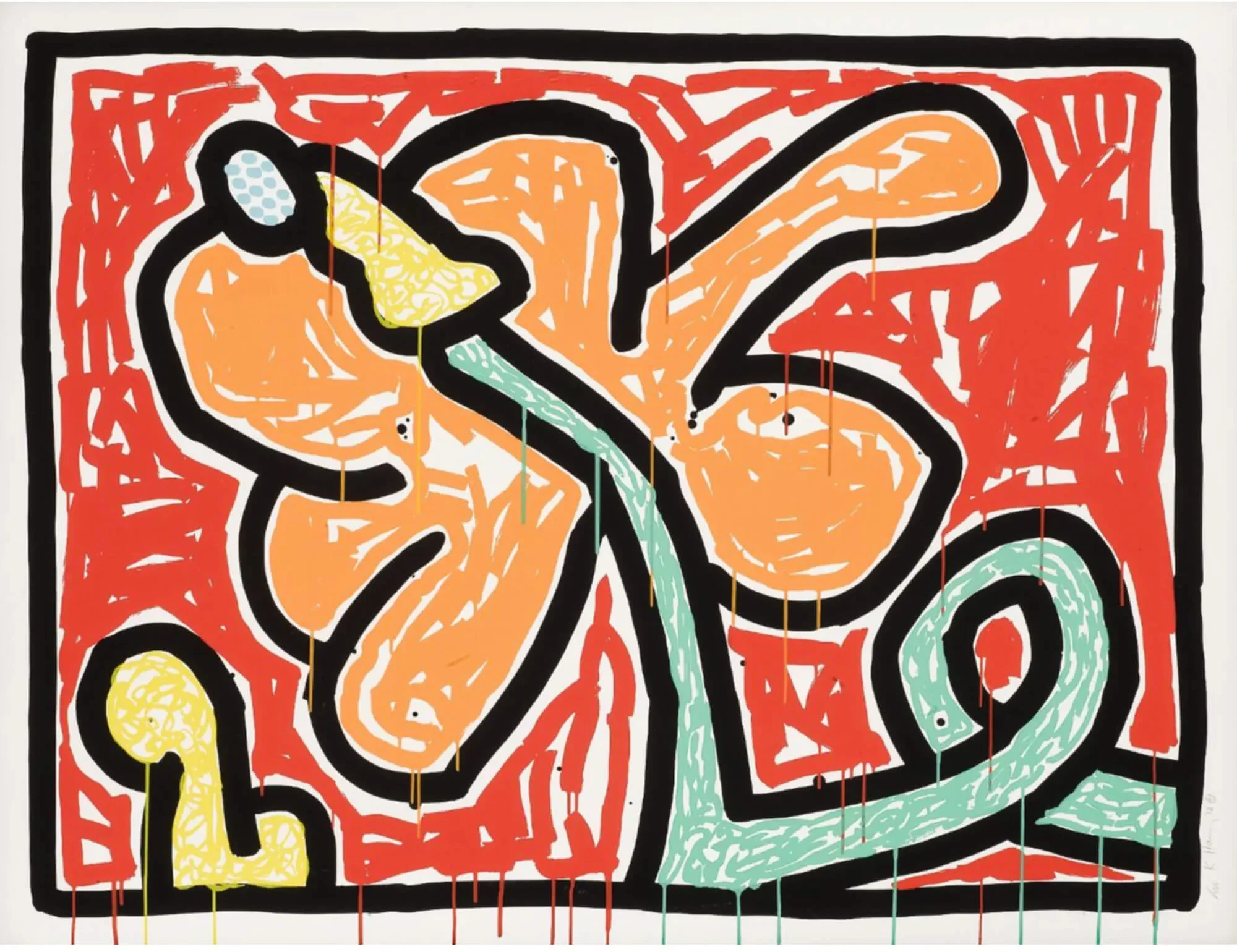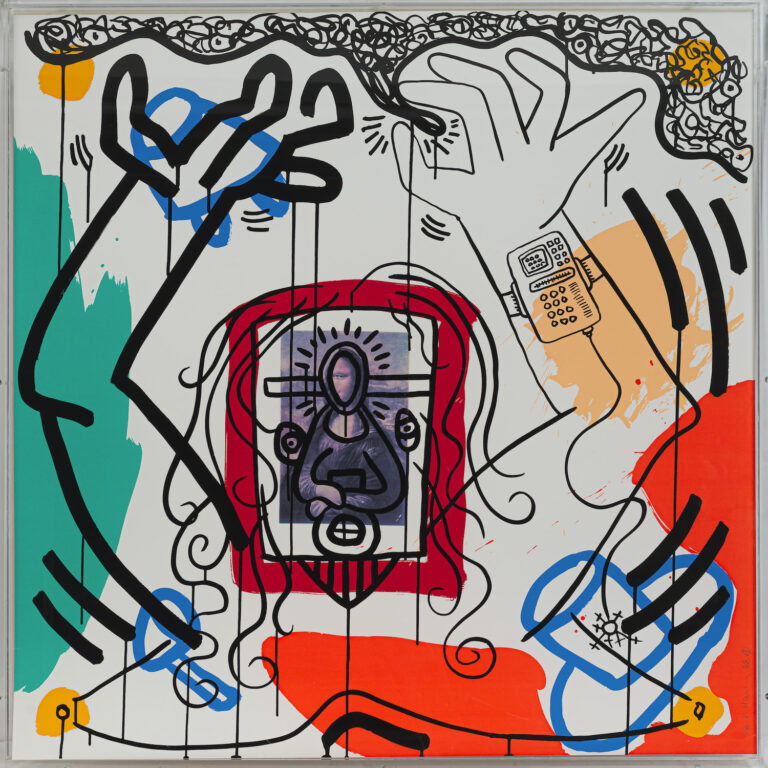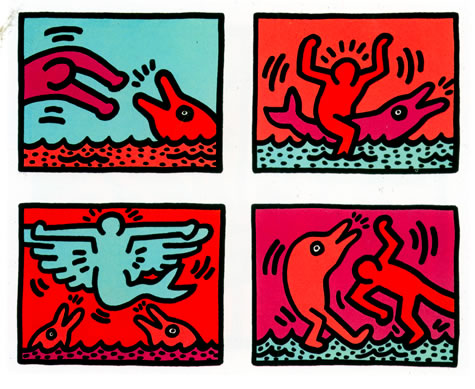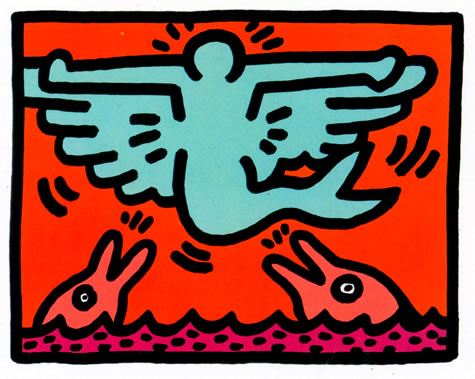The final offering in Keith Haring‘s Flowers series, Flowers V emerges as a compelling blend of figuration and abstraction, crystallizing the artist’s evocative journey throughout this sequence. Set against an electrifying red canvas, the image captivates with its intricate composition and vivid hues.
Indeed, of all the pieces in this series, this one most vividly recalls the quintessence of a flower. Complete with stems, petals, and the reproductive essence of pistils and stamens, it stands as a testament to the culmination of Haring’s vision. Yet, this seemingly straightforward depiction entices a closer, sideways look, revealing a transformative perspective. Hidden yet discernible is a humanoid silhouette, reminiscent of Haring’s iconic figures. Possessing a circular head, outstretched arms, and a lower half swelling with the vitality and allure of life, it exudes a jubilant sexuality. However, this exuberance is tinged with a poignant reminder, as Haring’s signature speckled pattern signifies the omnipresent specter of AIDS.
To the frame’s bottom left, a distinct shape bathed in brilliant yellow beckons interpretation. This enigmatic form, perhaps representing a sprouting seed or a radiant infant, might signify hope, rebirth, or a new beginning, infusing the narrative with a layer of optimism amidst overarching themes of love, loss, and life’s fragility.
Echoing the preceding works in this series, Haring’s application of color remains fervent and intense. His brushstrokes, filled with unbridled enthusiasm, occasionally leave areas of the canvas unveiled. This crafted rawness, augmented by the wayward trails of dripping paint that fall beyond the defining black border, heightens the piece’s immediacy, urging engagement with its simple yet profound motifs.
Concluding the series, this artwork masterfully encapsulates Haring’s transformative exploration, guiding viewers on a voyage from the abstract to the tangible, from despair to hope, and from the individual to the universal. Through its multifaceted layers and symbols, it stands as both an end and a new beginning, capturing life’s cyclical nature and the enduring power of art.
See also: Flowers I, Flowers II, Flowers III, and Flowers IV.





